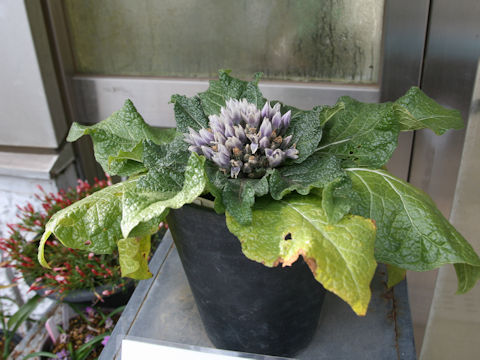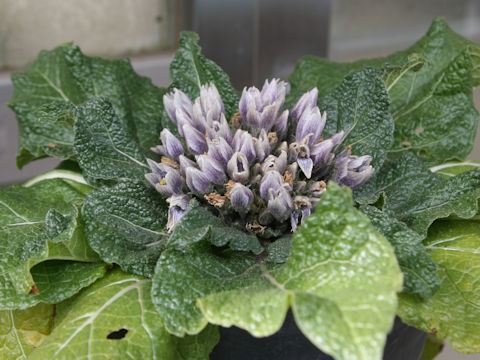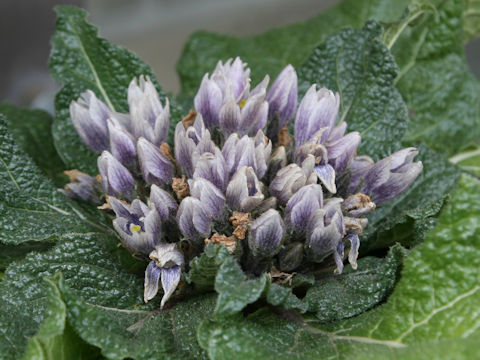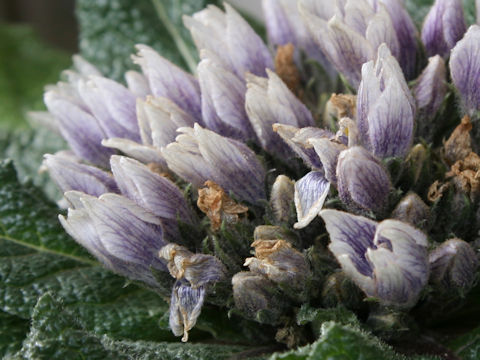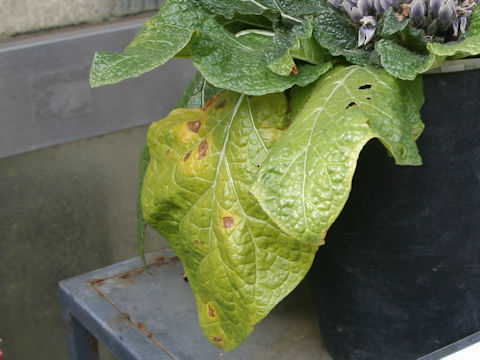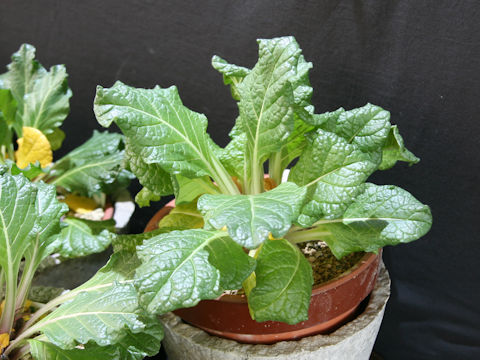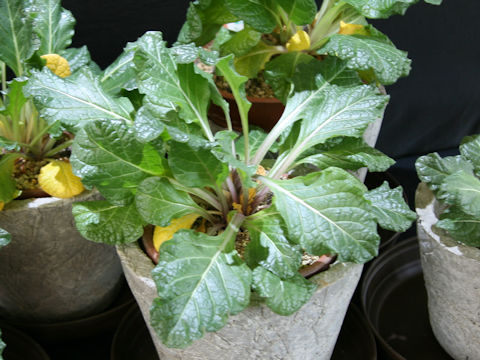
|
The Mandrake (Mandragora officinarum) belongs to Solanaceae (the Nightshade family). It is a perennial herb that is native to Italia, the northwestern part of the Balkan Peninsula, as well as Lebanon and Syria. It grows in temperate biomes and is 30 to 50 cm tall. Its dark green, ovate leaves are wrinkled on the surface and form a rosette. It produces bell-shaped white or light purple flowers from March to April. The fruits are berries and ripen to yellow or orange in October. The rhizome is a thick taproot that sometimes forks into two, and because it looks like a person, it has given rise to many legends. The most famous of these is the legend that a demon lives in the root, and when it is pulled out, it emits a loud scream and kills the person who pulled it out. The whole plant contains alkaloids such as atropine, and is a poisonous plant.
|
